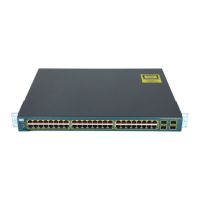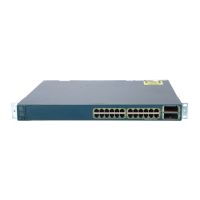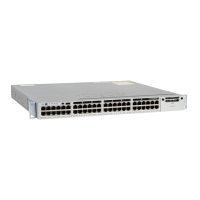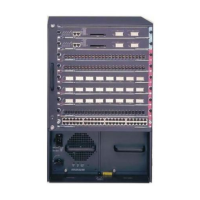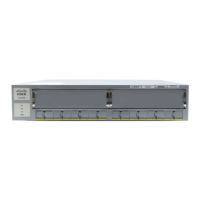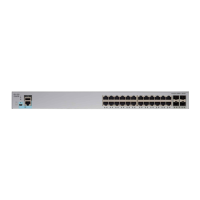34-27
Catalyst 3750 Switch Software Configuration Guide
78-16180-02
Chapter 34 Configuring IP Unicast Routing
Configuring OSPF
Configuring Basic OSPF Parameters
Enabling OSPF requires that you create an OSPF routing process, specify the range of IP addresses to
be associated with the routing process, and assign area IDs to be associated with that range.
Beginning in privileged EXEC mode, follow these steps to enable OSPF:
Distance OSPF dist1 (all routes within an area): 110.
dist2 (all routes from one area to another): 110.
and dist3 (routes from other routing domains): 110.
OSPF database filter Disabled. All outgoing link-state advertisements (LSAs) are
flooded to the interface.
IP OSPF name lookup Disabled.
Log adjacency changes Enabled.
Neighbor None specified.
Neighbor database filter Disabled. All outgoing LSAs are flooded to the neighbor.
Network area Disabled.
Router ID No OSPF routing process defined.
Summary address Disabled.
Timers LSA group pacing 240 seconds.
Timers shortest path first (spf) spf delay: 5 seconds.
spf-holdtime: 10 seconds.
Virtual link No area ID or router ID defined.
Hello interval: 10 seconds.
Retransmit interval: 5 seconds.
Transmit delay: 1 second.
Dead interval: 40 seconds.
Authentication key: no key predefined.
Message-digest key (MD5): no key predefined.
Table 34-5 Default OSPF Configuration (continued)
Feature Default Setting
Command Purpose
Step 1
configure terminal Enter global configuration mode.
Step 2
router ospf process-id Enable OSPF routing, and enter router configuration mode. The
process ID is an internally used identification parameter that is
locally assigned and can be any positive integer. Each OSPF
routing process has a unique value.

